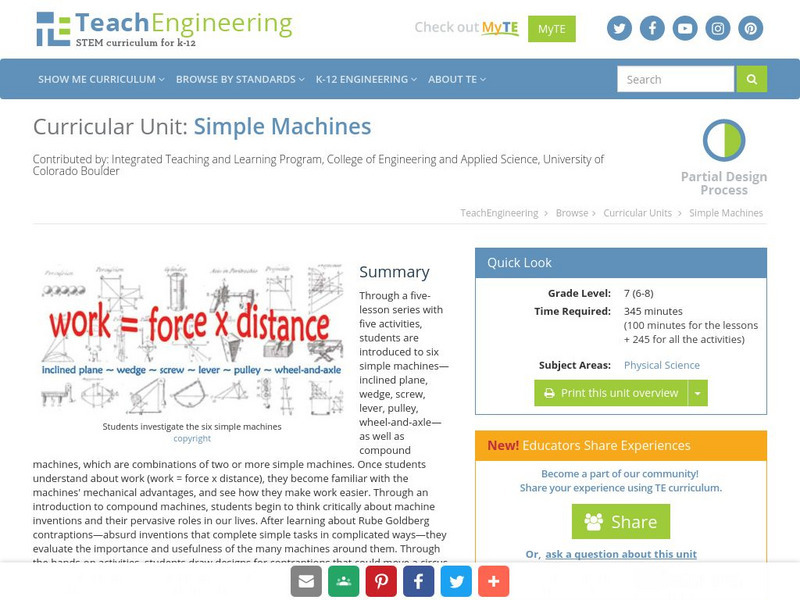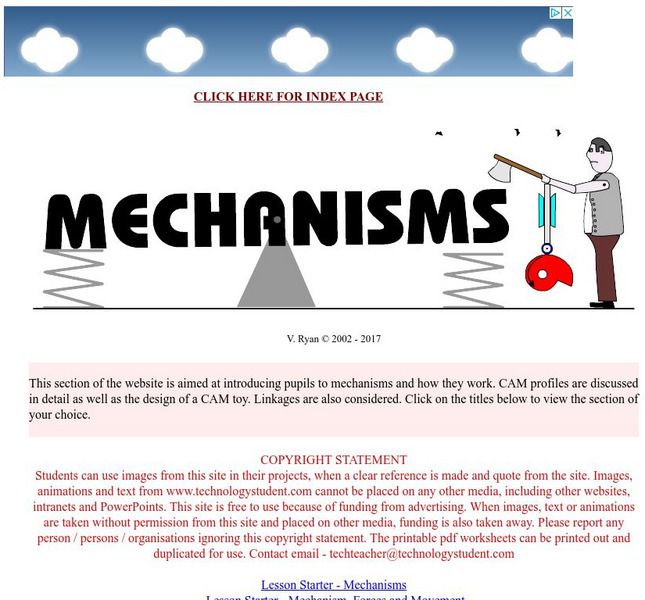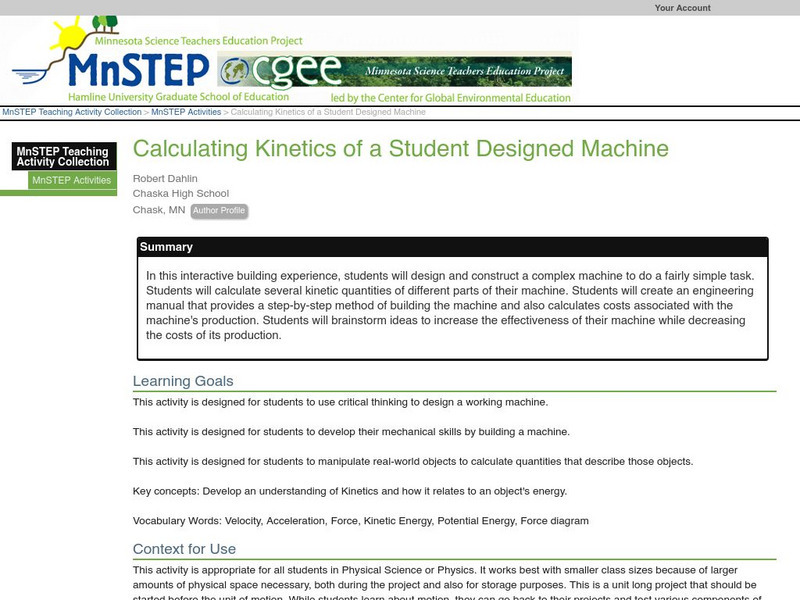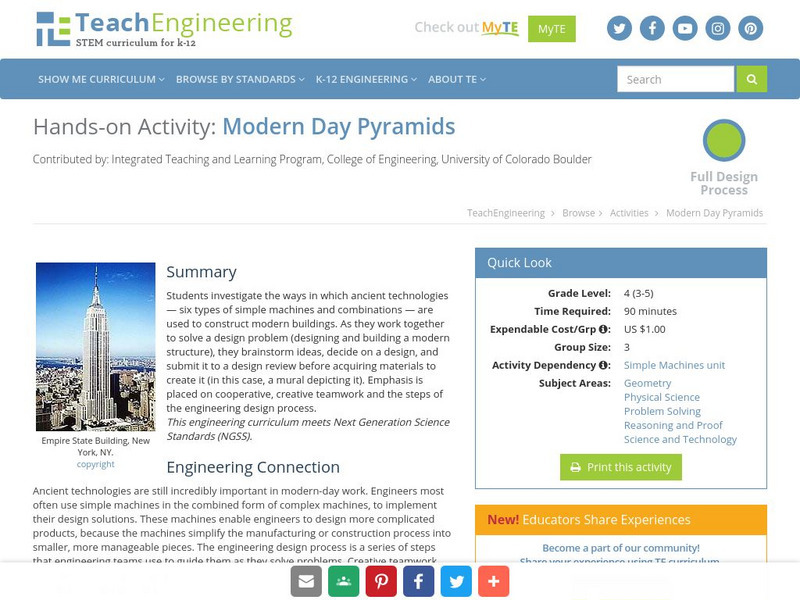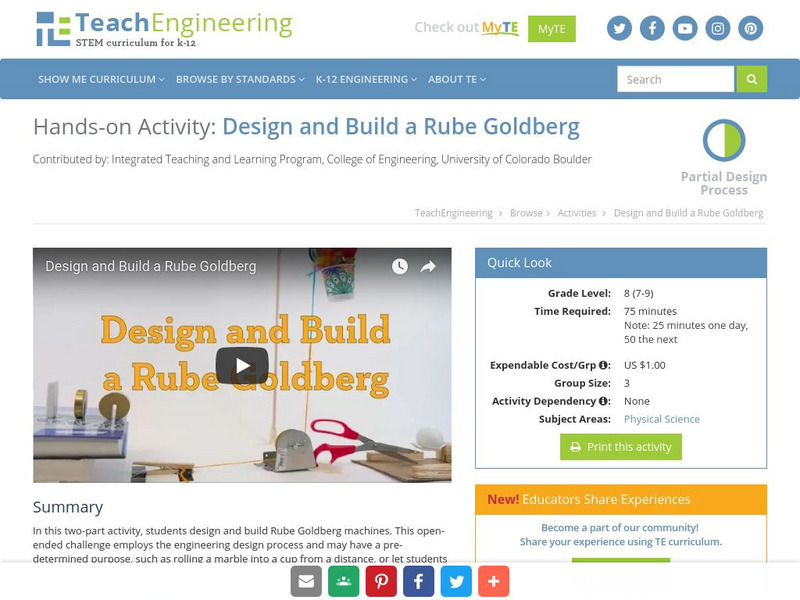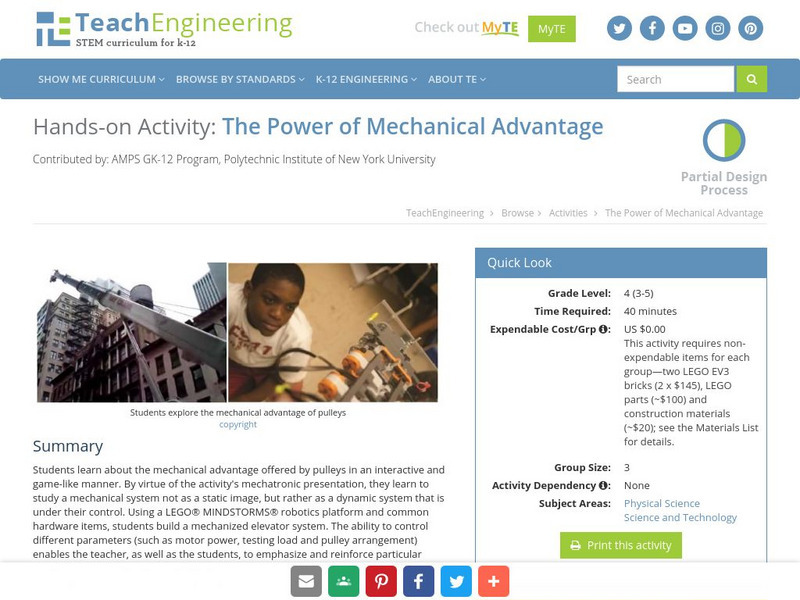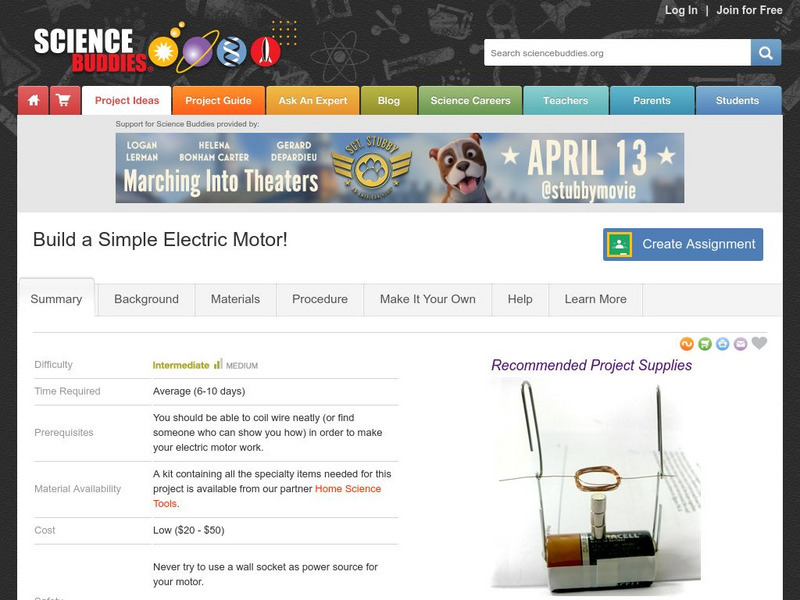TeachEngineering
Teach Engineering: Simple Machines
Through a five-lesson series with five hands-on activities, students are introduced to six simple machines - inclined plane, wedge, screw, lever, pulley, wheel-and-axle - as well as compound machines, which are combinations of two or...
TeachEngineering
Teach Engineering: Simple Machines From Pyramids to Skyscrapers
Simple machines are devices with few or no moving parts that make work easier, and which people have used to provide mechanical advantage for thousands of years. Students learn about the wedge, wheel and axle, lever, inclined plane,...
Alabama Learning Exchange
Alex: Inventions Using Simple Machines Project
Students will have completed a unit on the six simple machines (lever, inclined plane, pulley, wedge, screw, and wheel and axle) before beginning this project. Students will choose to investigate an invention composed of one or more...
Alabama Learning Exchange
Alex: Simple Machines
During this lesson, students learn about the six types of simple machines. They define each type of machine, experiment with each type, utilize the Internet to explore each type of machine and build their own simple machine. This lesson...
Massachusetts Institute of Technology
Mit: Blossoms: Using Geometry to Design Simple Machines
An MIT engineering professor offers a fun presentation on simple machines, specifically the geometry involved in building them. Students will learn about kinematics ("geometry in motion") and build their own simple machines with a...
Alabama Learning Exchange
Alex: How to Make Something Simple, Hard
Learners will have completed a unit of forces and motion prior to the current unit of study on simple machines (lever, inclined plane, screw, wedge, pulley, wheel and axle). Students will review the functions and examples of simple...
Technology Student
Technology Student: Mechanisms
This site describes mechanisms and simple machines, and the basic components used to build them.
Read Works
Read Works: Machines Can Move
[Free Registration/Login Required] An informational text about simple machines people use every day. A question sheet is available to help students build skills in reading comprehension.
Read Works
Read Works: Machines Can Move!
[Free Registration/Login Required] An informational text about simple machines used in daily life such as: a pulley, a screw, an inclined plane, a wheel and axle, a wedge, and a lever. A question sheet is available to help students build...
Science Education Resource Center at Carleton College
Serc: Calculating Kinetics of a Student Designed Machine
For this interactive building experience, students will design and construct a complex machine to do a fairly simple task. Students will calculate several kinetic quantities of different parts of their machine. Students will create an...
TeachEngineering
Teach Engineering: Modern Day Pyramids
Students investigate the ways in which ancient technologies - six types of simple machines and combinations - are used to construct modern buildings. As they work together to solve a design problem (designing and building a modern...
Technovation
Curiosity Machine: Challenges: Build a Robotic Face
Build a robotic face that can make facial expressions using simple machines on this website. This website includes the challenge, tips, a lesson plan, and a place for students to document their engineering design process.
Technovation
Curiosity Machine: Challenges: Build a Crank Mechanism
In this challenge, students will transfer rotational motion into linear motion by building a simple machine. The site also includes tips, a lesson plan, and a place for students to document their engineering design process.
Technovation
Curiosity Machine: Challenges: Build a Cam Mechanism
Create a simple machine that transfers a rotational motion into linear vertical motion with this challenge. The site gives more details on the challenge as well as tips and place to document your design process. Teachers can find a...
Technovation
Curiosity Machine: Challenges: Build a Joint Mechanism
This website challenges students to make a simple machine out of a straw to mimic the movement of joints in your body. The website includes a lesson plan, tips, and a place for students to document their design process.
Technovation
Curiosity Machine: Challenges: Construct a Crane
Can you build a crane that uses simple machines and mechanical advantage to move heavy objects? This website contains a challenge, tips, a lesson plan, and a place for students to document their engineering design process.
TeachEngineering
Teach Engineering: Pyramid Building: How to Use a Wedge
Young scholars learn how simple machines, including wedges, were used in building both ancient pyramids and present-day skyscrapers. In a hands-on activity, students test a variety of wedges on different materials (wax, soap, clay,...
TeachEngineering
Teach Engineering: Design and Build a Rube Goldberg
In this two-part activity, students design and build a Rube Goldberg machine. The open ended problem uses the engineering design process and can have a preset purpose, such as rolling a marble into a cup from a distance, or can be left...
TeachEngineering
Teach Engineering: The Power of Mechanical Advantage
Students learn about the mechanical advantage offered by pulleys in an interactive and game-like manner. By virtue of the activity's mechatronic presentation, they learn to study a mechanical system not as a static image, but rather as a...
Science Buddies
Science Buddies: Give It a Lift With a Lever
Simple machines allow us to do difficult tasks like lifting objects heavier than our body weight. In this science project you'll build a tabletop lever and measure how much effort it takes to lift an object by altering the length of the...
Science Buddies
Science Buddies: Spin Right 'Round With This Simple Electric Motor
If you put on clothes that were washed in a washing machine, rode in a car, ate food from a fridge, warmed up lunch in a microwave, or played a video game, you used an electric motor. Try this science fair project and you'll learn how to...
Museum of Science
Museum of Science and Industry: Online Science: Build a Lever
Step-by-step illustrated instructions for an experiment investigating how a lever works. An explanation of the science involved is given at the end.
TeachEngineering
Teach Engineering: Design Your Own Rube Goldberg Machine
Rube Goldberg is famous for his very complex machines that accomplish everyday tasks. Students will design and build a Rube Goldberg machine that will accomplish a simple task in no less than ten steps.
TeachEngineering
Teach Engineering: Solid Rock to Building Block
Students continue their pyramid building journey, acting as engineers to determine the appropriate wedge tool to best extract rock from a quarry and cut into pyramid blocks. Using sample materials (wax, soap, clay, foam) representing...
